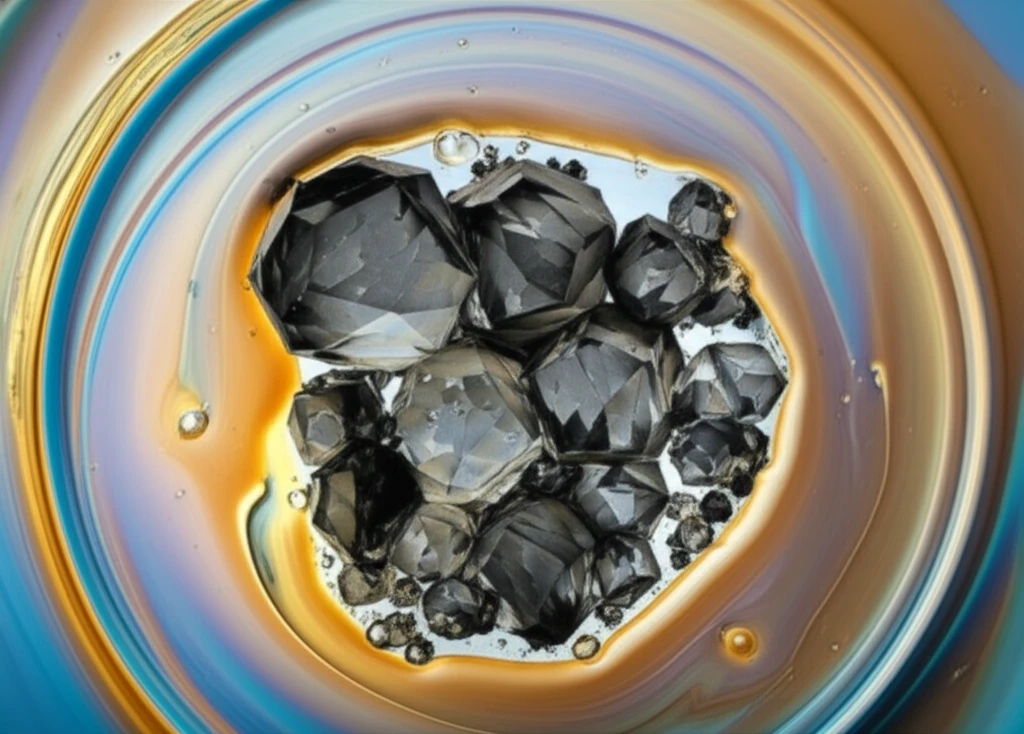
Nano Boron Carbide: A New Synthesis Method for High-Purity Powders
"Researchers explore a novel, cost-effective technique to create advanced materials for industries from abrasives to nuclear shielding."
Boron carbide (B4C) is a super-hard material with a high melting point and excellent chemical inertness, making it useful in applications ranging from abrasives and cutting tools to nuclear reactor components and body armor. Traditionally, B4C is made using high-temperature processes, which can be energy-intensive and expensive. This has driven the search for alternative, lower-temperature synthesis methods.
Polymer-derived ceramics (PDCs) have emerged as a promising route for B4C synthesis, offering the potential for lower processing temperatures. This approach involves using a polymer precursor that, when heated, decomposes to form the desired ceramic material. Researchers have experimented with different precursors and techniques to optimize the process and achieve high-purity B4C.
A recent study published in Materials Research Express explores a novel variation of this method, focusing on the impact of glycerin on the synthesis of nano-plated boron carbide powder. By using a solid-solid-liquid reaction (SSLR) with poly (vinyl alcohol), boric acid, and glycerin, the researchers achieved a cost-effective and efficient route to high-purity B4C nanoparticles. This article breaks down the study's findings, highlighting the key steps, benefits, and potential applications of this innovative approach.
The Glycerin Advantage: How it Enhances Boron Carbide Synthesis

The study centers around a modified solid-state reaction (SSR) technique where glycerin is added to a mixture of poly (vinyl alcohol) (PVA) and boric acid (BA). This method, termed solid-solid-liquid reaction (SSLR), offers several advantages. The presence of glycerin, a liquid polyol, promotes a more homogenous mixture and enhances the reaction between the starting materials at lower temperatures. The process involves:
- Mixing PVA, boric acid, and glycerin in specific weight ratios.
- Heating the mixture in air at 200-250°C to initiate the solid-solid-liquid reaction.
- Pyrolyzing the resulting precursor at 500-750°C to create a preceramic material.
- Heat-treating the preceramic precursor at 1475°C under argon flow to obtain the final boron carbide product.
Future Implications: Greener Manufacturing and Advanced Applications
This research demonstrates a promising pathway for cost-effective and energy-efficient production of high-purity boron carbide nanoparticles. The use of glycerin in the solid-solid-liquid reaction offers improved control over the reaction process, leading to enhanced material properties and reduced processing temperatures.
The implications of this work are significant for various industries. The availability of high-quality, nano-sized B4C at lower costs could accelerate the development of advanced materials for:
<ul> <li>Abrasives and cutting tools with improved performance</li> <li>Lightweight body armor and protective coatings</li> <li>Neutron absorbers for nuclear applications</li> <li>High-performance ceramics for aerospace and automotive industries</li> </ul> Furthermore, the study highlights the potential of polymer-derived ceramic techniques for sustainable manufacturing of advanced materials, paving the way for greener and more efficient production methods.
